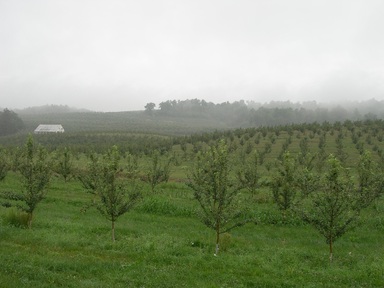The Project: description

Farm Labor brings the voices of family farm owners and agriculture production managers into the immigration reform debate while exploring what seasonal farm labor might look like in the future. Immigration reform will affect a broad range of workers and families in every imaginable circumstance, but this project takes a very narrow focus. Farm Labor looks at what seasonal labor has been historically, what models could exist in a future that prioritizes sustainable production, and how those concerns overlap with food security, environmental preservation, community cohesion and economic opportunity.
The project is directed at policy makers and their constituencies. It includes short films, a website that expands on the ideas in the films and social media applications that encourage thought and dialogue.
Farm Labor films are "social issue documentaries" -- combining a clear point of view on an important social issue with aesthetic concerns and regard for story, character and emotional connection. The short form film is integral to the project: policy makers and agricultural producers can make time to watch a video under five minutes -- and the length and form are ideal for mobile devices.
Strategic partnerships, in the form of temporary alliances with educational and advocacy organizations, and dissemination through select membership groups, advance the project goal of contributing to comprehensive immigration reform.
The project is directed at policy makers and their constituencies. It includes short films, a website that expands on the ideas in the films and social media applications that encourage thought and dialogue.
Farm Labor films are "social issue documentaries" -- combining a clear point of view on an important social issue with aesthetic concerns and regard for story, character and emotional connection. The short form film is integral to the project: policy makers and agricultural producers can make time to watch a video under five minutes -- and the length and form are ideal for mobile devices.
Strategic partnerships, in the form of temporary alliances with educational and advocacy organizations, and dissemination through select membership groups, advance the project goal of contributing to comprehensive immigration reform.

Farm Labor developed out of a personal interest in family farms and seasonal workers. I grew up in a fruit growing region and my childhood summers were spent climbing trees (see photo to right), riding my horse in the orchards and swimming in the irrigation ponds with friends from nearby farms. In high school, like most of the kids I knew, I picked fruit alongside migrant workers who were at that time African-American men and women from the South and men from Puerto Rico. When the fruit season was over, the vast majority of those seasonal workers went back to where they lived.
Now, in that region, the workers are primarily from Mexico and while most of them are immigrants, many live in the community. In fact, according to the U.S. Department of Agriculture, using national data from the 2007 census, most hired seasonal farm laborers in crop production in the U.S. work within 75 or 100 miles from where they live. Though these workers are still often referred to as “migrants”, in fact most of them do not migrate. They are deeply rooted in their communities and yet for those undocumented residents their voice in civic matters is largely unheard.
We hope you find this website and the films interesting and stimulating and that you find something here that surprises you and makes you think something new about these issues. The website is a work in progress as we search for relevant material and seek new friends and partners. Please let us know what you think and please share your stories with us.
- Kathryn Smith Pyle
Now, in that region, the workers are primarily from Mexico and while most of them are immigrants, many live in the community. In fact, according to the U.S. Department of Agriculture, using national data from the 2007 census, most hired seasonal farm laborers in crop production in the U.S. work within 75 or 100 miles from where they live. Though these workers are still often referred to as “migrants”, in fact most of them do not migrate. They are deeply rooted in their communities and yet for those undocumented residents their voice in civic matters is largely unheard.
We hope you find this website and the films interesting and stimulating and that you find something here that surprises you and makes you think something new about these issues. The website is a work in progress as we search for relevant material and seek new friends and partners. Please let us know what you think and please share your stories with us.
- Kathryn Smith Pyle